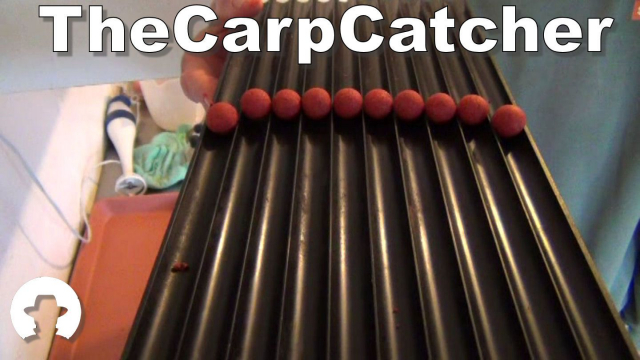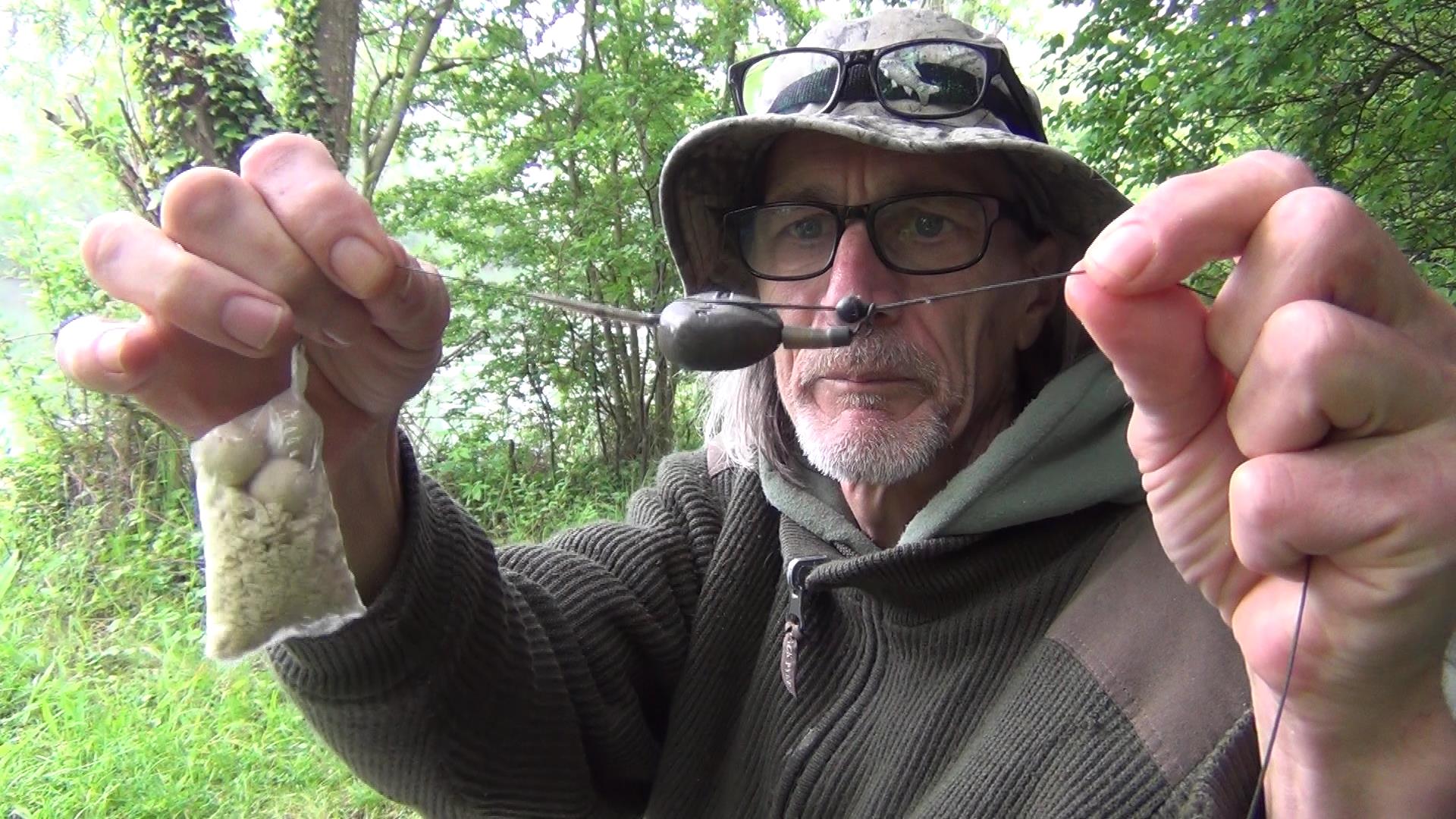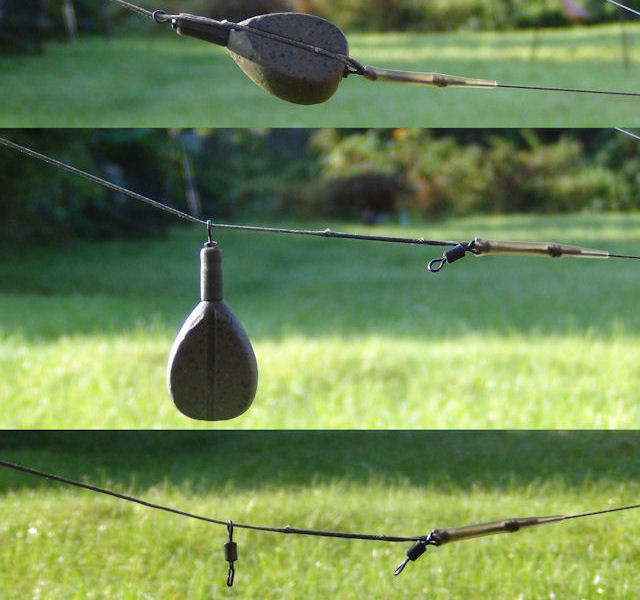
A new update is available here https://thecarpcatcher.co.uk/thecarpcatchers_blog.php?post=965
HOWEVER if this is your first visit then read this first 👇
Since 2014 I have been using lead systems that switch to running rig systems once the carp have shook the lead free of the rig. The advantage of this is that you wont be dumping leads all over the lake.
This is something that has recently become a concern of mine as I was getting through an awful lot of leads. If like me you're fishing waters with plenty of Tench and Bream then each time you get a run on the conventional lead dumping system you could potentially lose a lead. My first session on 'Linford one' produced in excess of 30 runs from the tench and I was struggling to save leads having got through a dozen or more in the first twenty-four hours. It was then that I first started to play with the lead systems I was using trying to come up with a solution.
As with many 'ideas' this is not solely mine but incorporates attributes from other setups I and others have used.
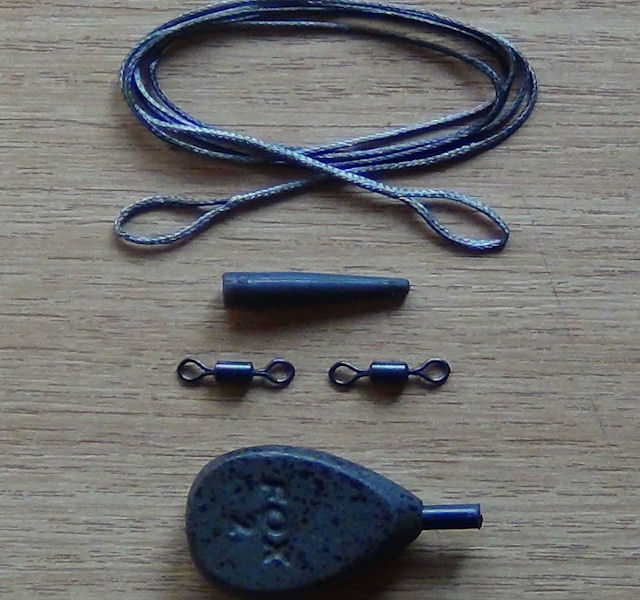
No 1, it had to be simple.
No 2, it had to be safe and all come apart.
No 3, it had to use items I had in my tackle box and not specially made bits.
No 4, it had to allow the carp to eject the lead easily yet retain enough tension to hook the fish.
No 5, it had to turn into a running rig system once the lead was ejected from the rig.
No 6, it should allow the lead to pull free of the running system should the lead snag.
As with all things they evolve and so has this since I started but the main requirements are still there. So lets have a closer look at it and I'll explain why I have ended up with the current setup.
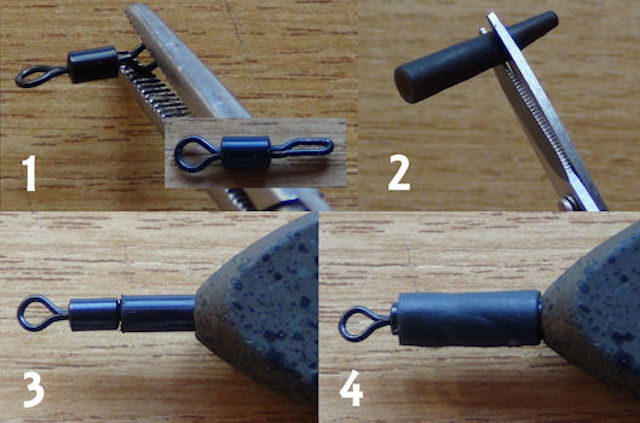
1. To make the running rig part take one of your swivels and flatten the end with a pair of forceps or pliers.
It should be flattened so that it slides in and out of the plastic tube insert without any binding.
This helps keep the profile of the swivel inline with the insert.
2. Cut your tail rubber at 1.5cm long and bin the top part
3. Insert the flattened end of the swivel into the plastic tube insert for the lead.
4. Push the tail rubber over the swivel and down the plastic tube insert. You can adjust the amount of force needed to pull the lead off by simply moving the swivel in or out of the tail rubber.
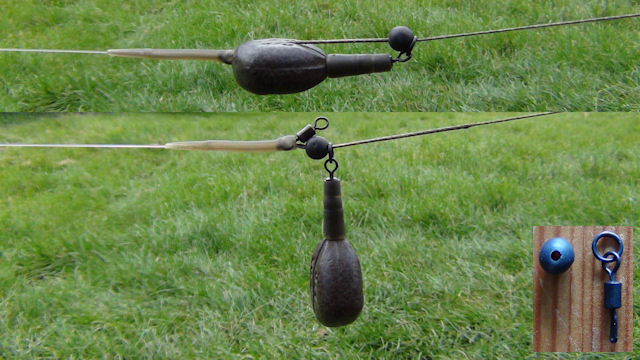
If you use a large eyed swivel for the running rig part then you must also use a rubber bead to buffer against the hooklink swivel
Follow all the steps for the running rig part but also include your rubber bead on your leader when putting it all together
I use a soft rubber bead with a large bore that has a smaller opening one side so it lightly grips the leader and holds it's position under the swivel

1. To make the semi-fixed rig part pass your leader loop through the rigs figure of eight loop.
2. Take one of your swivels and pass the loop on the leader through one eye.
3. Take your rig and pass that through the leader loop.
4. Pull tight.
I came up with this way of attaching the leader to the hooklink because I wanted a straight pull between the two. Previously I had attached them separately to the swivel passing the leader and the rig back through there own loops.
However I found this pulled the swivel apart and caused undue stress to it, hence the modification. This attachment method also makes it easy to quickly change rigs as all you have to do is push on the figure of eight loop on the rig to loosen.

Once you have completed these two parts you can put the lead system together.
1. Slide the end of the leader through the running rig eye attached to the plastic tube insert.
2. Push in the free eye of the swivel on the semi-fixed part into the other end of the plastic tube insert.
Tension on the semi-fixed part
You might find that you need to either open up or close the free eye on the swivel that you push into the other end of the plastic tube insert ever so slightly to give it that right amount of bite.
I now use this setup for most of my fishing, I lose a fraction of the leads I used to and it has definitely helped me catch a lot more fish.
Steve Whitby


